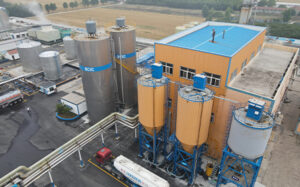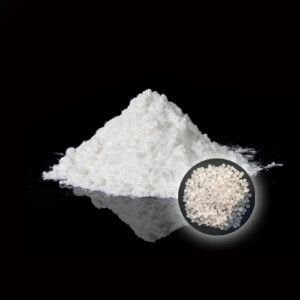Introducción
Textile dyeing is a complex process that involves intricate chemical interactions to achieve vibrant and lasting colors on fabrics. Sodium formate, a versatile compound with unique properties, plays a significant role in enhancing the textile dyeing process. This article delves into the multifaceted significance of sodium formate in textile dyeing, exploring its functions, benefits, and impact on the final product.
Understanding Sodium Formate in Textile Dyeing
¿Qué es el formato de sodio?
Sodium formate (HCOONa) is a sodium salt derived from formic acid (HCOOH). With its water solubility and chemical stability, sodium formate finds applications in various industries. In the realm of textile dyeing, it serves as an essential tool for achieving desired dyeing outcomes.
Formiato de sodio Significance in Textile Dyeing
1. Dye Affinity Enhancement
Sodium formate is used as a dyeing assistant due to its ability to enhance the affinity between dye molecules and textile fibers. By increasing the attraction between the dye and the fabric, sodium formate ensures even dye distribution and improved color fastness.
2. pH Regulation
Maintaining the proper pH level is critical in textile dyeing to achieve optimal dye uptake and color development. formiato de sodio acts as a pH regulator, helping to create an environment conducive to efficient dye absorption by textile fibers.
3. Reduction of Metal Ions
Metal ions present in water or used in dyeing processes can interfere with dye-fiber interactions and cause undesired color shifts. Sodium formate’s reducing properties enable it to effectively reduce metal ions, preventing their negative impact on dyeing results.
4. Improved Dye Solubility
Sodium formate contributes to the solubility of certain dyes by acting as a solubilizing agent. This property ensures that dyes dissolve readily in the dye bath, leading to uniform dye distribution and enhanced color saturation.
Complexity and Burstiness in Textile Dyeing
1. Complex Molecular Interactions
The complexity of textile dyeing lies in the intricate molecular interactions between dyes and fibers. formiato de sodio role adds complexity by influencing pH levels, promoting reduction reactions, and enhancing dye affinity, resulting in intricate color development.
2. Burstiness in Color Transformation
The burstiness emerges when sodium formate catalyzes color transformations during dyeing. As it regulates pH, enhances dye solubility, and facilitates dye-fiber interactions, sodium formate contributes to rapid and impactful changes in fabric color.
Applications of Sodium Formate in Textile Dyeing

1. Natural and Synthetic Fibers
Sodium formate’s significance in textile dyeing extends to both natural and synthetic fibers. It can be used to improve dyeing results on fabrics made from cotton, wool, silk, polyester, and other materials.
2. Wide Range of Colors
From vibrant hues to subtle shades, sodium formate’s role in dyeing allows for a wide range of colors to be achieved on textiles. Its influence on dye affinity and color development contributes to the diversity of color options.
3. Enhanced Color Fastness
By ensuring uniform dye distribution and strong dye-fiber interactions, sodium formate enhances color fastness, resulting in textiles that retain their vibrant colors even after repeated washing and exposure to external factors.
FAQ about Sodium Formate in Textile Dyeing
Q1: Can sodium formate be used with all types of dyes and fabrics?
A1: Sodium formate’s compatibility depends on the specific dye and fabric being used. It is more effective with certain types of dyes and fibers, and its usage should be tailored to the dyeing process requirements.
Q2: Does sodium formate impact the texture or feel of the dyed fabric?
A2: Sodium formate primarily influences the dyeing process and color development. When used correctly, it shouldn’t significantly impact the texture or feel of the dyed fabric.
Q3: Is sodium formate eco-friendly in textile dyeing?
A3: Sodium formate is generally considered to be relatively eco-friendly compared to certain other chemicals used in dyeing. However, overall environmental impact also depends on factors like waste treatment and dyeing process optimization.
Q4: Can sodium formate replace other dyeing assistants or chemicals?
A4: Sodium formate can serve as a dyeing assistant, but its role is specific to enhancing dye affinity and regulating pH. It might complement other dyeing chemicals, but its direct replacement would depend on the specific dyeing process and goals.
Conclusión
The significance of sodium formate in textile dyeing is multifaceted and impactful. Its ability to enhance dye affinity, regulate pH, reduce metal ions, and improve dye solubility contributes to the creation of vibrant and long-lasting colors on fabrics. The complex molecular interactions and burstiness of color transformation make sodium formate a valuable tool in achieving intricate dyeing outcomes across a wide range of textiles.



